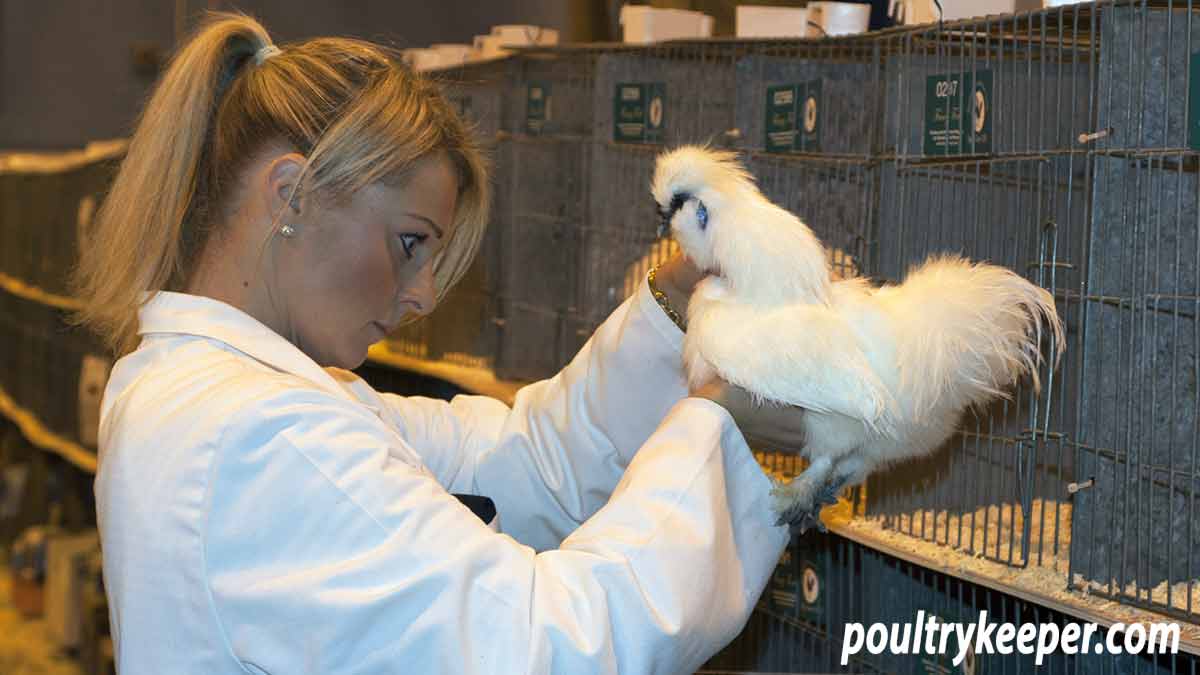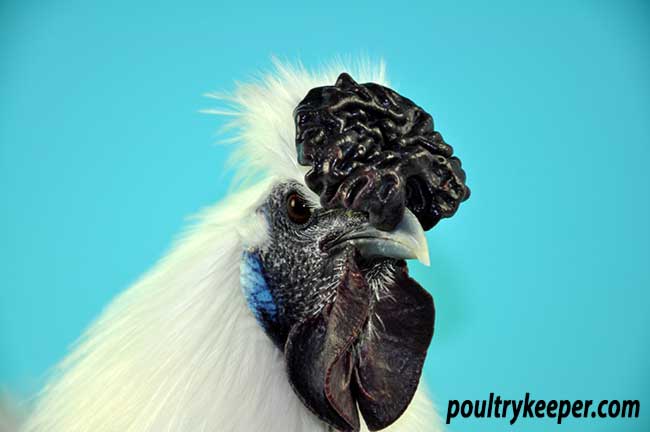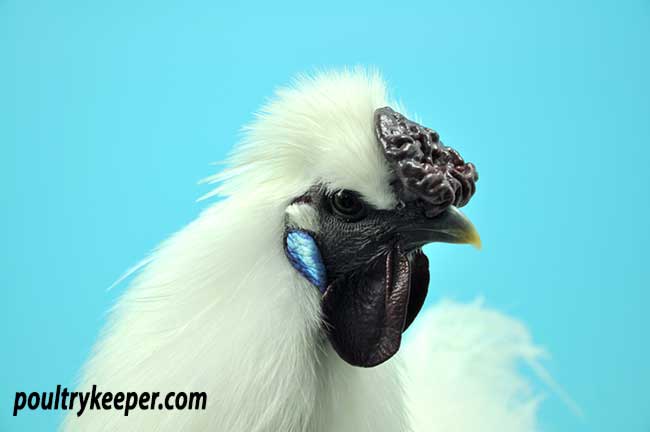
In this article, Laurence, who has previously judged at the National level, examines the Silkie Breed Standard and provides some tips and tricks for exhibiting Silkie chickens.
Probably one of the most popular of the exhibition breeds and certainly one of the best suited for showing, silkies are normally found on the championship row of the larger shows and have a history of being a good ladies exhibit (popular with female exhibitors as opposed to only shown by women!) Here is some guidance on exhibiting silkies and the silkie breed standard.
Preparation is an art in itself, and clever washing and drying at the correct time before a show will fluff a bird up beyond expectation, and certainly is worth the effort if you wish to compete: a badly prepared bird will fail to do well regardless of its genetic quality.
When showing your silkie, you should remember that a judge will look to grade your bird on 5 main points found in the Silkie breed standard:
Type (20 points)
This is how the bird looks, the features that make it a silkie. It should look broad and stout, and the back should be short and rise through to a short, rounded, fluffy tail. Fluff should cover the body in abundance, and the wings ragged.
There should be a lack of hard feathering, even in the males, where you will sometimes get harder tail feathers (which will be penalised). In the female, the under fluff should nearly touch the ground. The overall shape is cobby and rounded. Large birds should weigh 1.8 kilos (4lb) for males and 1.3 kilos (3lb) for females. In the bantam size, males should be 600g (22oz), females 500g (18oz).

The bearded type of Silkie should have full ear muffling and a beard that covers the lower part of the face with reduced wattles.
Remember that the bird should be alert and lively; a sick or lethargic bird will be disqualified, and you may find a note on the cage to see the breed secretary!
Head (30 points)
A feature in its own right, the head should be short and neat and topped with a pompom like a powder puff which in the male will have shiny ‘streamer’ feathers pointing backwards. The crest should not obscure the eyes. The beak should be a slate grey (black in a black bird), short and neat and complimented by black eyes.


The comb is often described as walnut, strawberry or cushion (the preferred term). It should be slightly rounded in the male (more wide than long) with an indentation running left to right and many small lumps across it (it has been likened to a flattened mulberry).
In the female Silkie, the comb should be tiny and hidden by the crest (although the comb should not split the crest).
The comb should not be a single type. The ears should be small and neat, and preference is normally given to turquoise blue ear lobes, although mulberry lobes are permitted.
The wattles in the male are small and neat and a dark mulberry colour. In the female, they should be nearly absent and black. The face should be black in both sexes, tending to a deep mulberry in the male.
Legs (10 points)
The legs should be short and wide-set but not bowed. They should be well fluffed at the thigh and moderately feathered along the shank (no hard feathers). The toes, which are also feathered, should be 5 in number, with the fifth toe coming off of the fourth. Pincer toes (like a crab claw) are a fault. Each toe should have a full nail. Legs and feet should be a dark slate colour.
Colour (10 points)
Black birds should be even although a small amount of colour is permissible in the hackle but not desirable.
Blue birds should be an even colour, no patchiness or splashing.
White birds should be a brilliant white
The partridge should be as follows:
Male
- Head and crest dark orange.
- Hackles orange/yellow with a black stripe down the centre.
- Back and shoulders orange.
- Wing Bar and primaries black.
- Secondaries (outer web) dark orange, (inner web) black.
- Tail and sickles, leg feathers and breast black.
Female
- Neck and breast lemon striped with black.
- Hackle lemon with a black centre.
- Head and crest lemon and black.
- Body soft partridge brown with black barring.
In all colours, the skin should be dark, almost black according to the Silkie breed standard.
There are more photos on the Silkie chickens breed page.
Plumage (30 points)
This is what makes the silkie a silkie! It should be silky and fluffy with hair-like feathers throughout. The feathers should be profuse and thick, cover the thighs, run down the shanks, and cover the middle and outer toes.
There should be an absence of hard feathering. The wings are described as ‘osprey’ feathered, which can confuse people; the wings should certainly not be like those of an osprey – they should be ragged with some of the flight feathers hanging loosely down, almost tattered.
Defects that will reduce points are:
- Hard feathers.
- Green in the beak.
- Horns on the comb.
- Red face, comb or wattles.
- No crest or poor crest.
- Crest obscuring the eyes.
- Split crest.
- Poor colour to either plumage or skin.
- Green soles.
- Split wings (where there is a gap between the primaries and secondaries).
- Light eyes.
- Reduced toe size or absence of a nail.
Defects resulting in a disqualification are:
- Single comb.
- More or less than 5 toes.
- Green legs.
- Featherless legs or feet.
- Vulture hocks (hard feathering in the hock which points down as in a Sultan).

For further information on the Silkie breed standard, see the British Poultry Standards in association with the Poultry Club of Great Britain.
See Tips and Tricks for Exhibiting Your Show Chickens for further tips on exhibiting Silkies and other chicken breeds.
Have fun exhibiting your Silkies!


